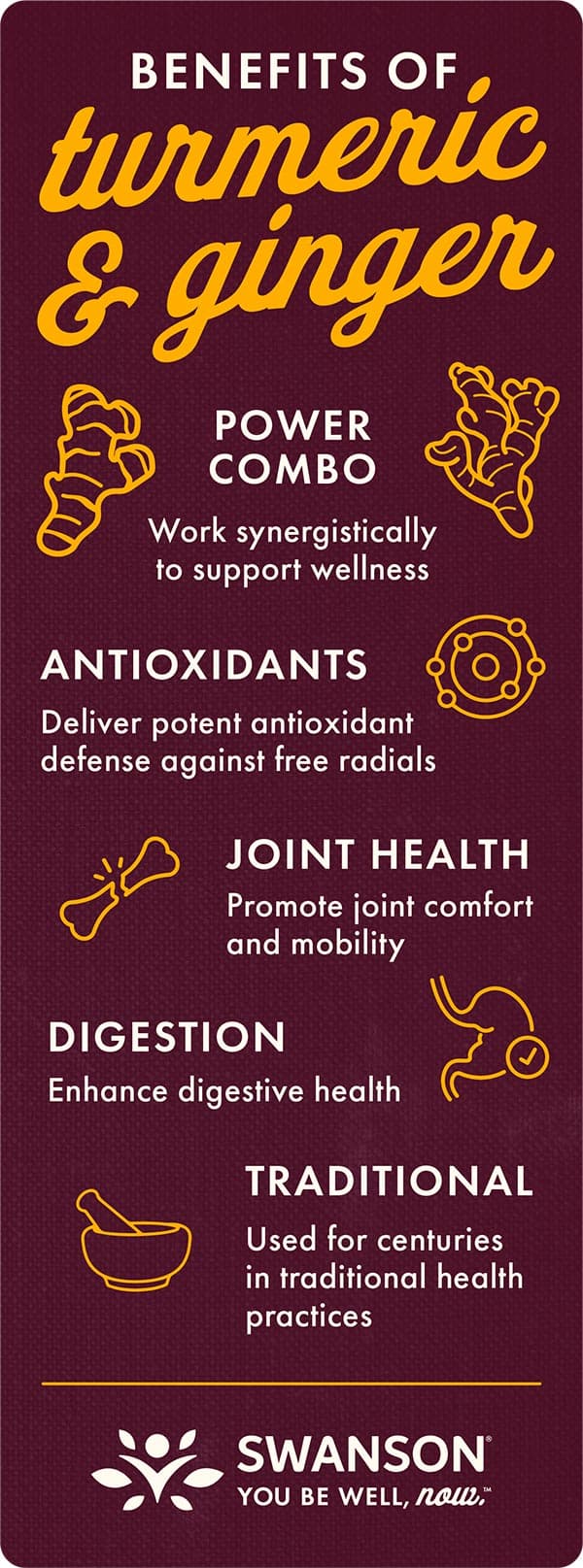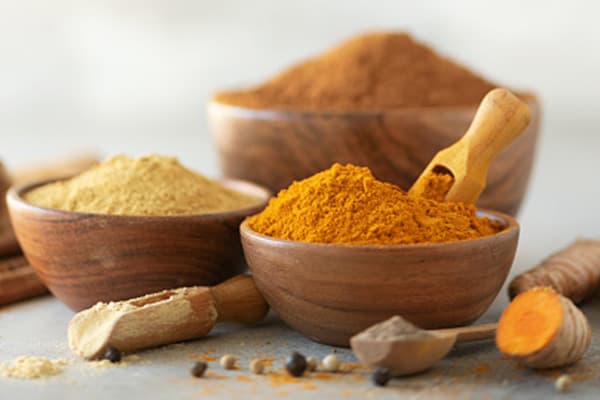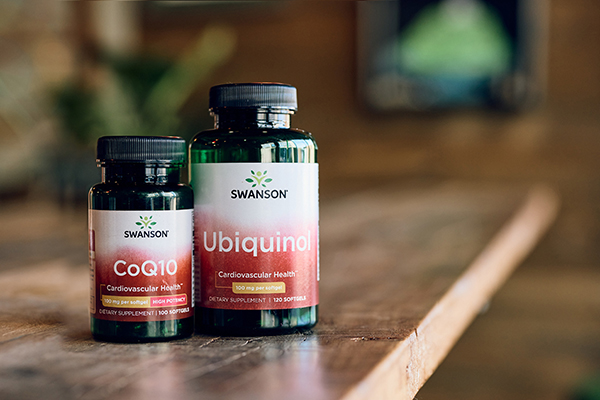Turmeric vs. Ginger for Joint Health
Enjoying healthy, comfortable, and mobile joints is something most folks aspire to both now and for years to come. It’s no mystery then that many are interested in the benefits of herbal allies like ginger and turmeric for joint health. But what benefits do each of these provide, and how can they contribute to overall joint health? Is one more helpful than the other? The questions surrounding turmeric vs. ginger are important ones to ask, so today we’re going to explore each one so that you can confidently decide on the best support for your long-term joint health. Let’s get started!
What are Turmeric and Ginger?
First things first: what are turmeric and ginger? These two plants actually belong to the same plant family (Zingiberaceae), with the underground portions (called “rhizomes”) being utilized for both culinary and health benefits.
Turmeric is primarily grown in warm, humid regions of southeast Asia, such as India, and has historically been used in traditional health practices for a variety of benefits, including joint health. Its active compound is curcumin—a source not only of its many wellness attributes, but also of its distinctive yellow color.1
Also native to Asia, ginger has an easily recognizable root which grows underground and has a distinct beige color. Thick and knotted, ginger rhizomes have been used as a spice in recipes throughout the Middle East and Asia for millennia. But its uses don’t stop there, as ginger has also played a key role in several ancient traditions to support various aspects of health. Not unlike turmeric, these benefits include joint comfort and moobility.2
Benefits of Turmeric for Joints
Turmeric, and more specifically its curcumin component, has been linked in scientific studies to increased osteo wellness, including improved joint comfort and range of motion.3 The positive effects of curcumin on joint comfort and overall joint wellness have been documented in various trials, demonstrating a pattern of efficacy in promoting healthier joints as it helps reduce occasional inflammation due to normal wear and tear.4 This supports a more active lifestyle.
Benefits of Ginger for Joints
Ginger has a long history of use for supporting joint comfort and wellness, and for good reason! In addition to being a source of antioxidants, its components have been linked to the prevention of certain proteins being produced in the body that in turn can cause joint discomfort and other challenges. Ginger is also associated with maintaining healthy cartilage in the joints—a key element of long-term joint health.5 By including ginger in your diet or supplement regimen, you will be able to better promote overall joint comfort.
Which is Better for Joint Health?
Being members of the same herbal family, turmeric and ginger may be equally beneficial for joint health. Still, some variation of benefits exists, so asking which is better for joint health is important. Both turmeric and ginger provide a natural source of antioxidants which can help defend against free radicals and the damage they cause to joint tissues over time. Both provide comfort to joints and support the health of surrounding structures.
When it comes to incorporating either into your diet, it should be kept in mind that ginger has a distinctive taste that some would describe as “fiery” or “warm.” Others simply find it invigorating to the senses, so its true palatability may be up to each individual to decide on. By contrast, turmeric is featured in curry dishes, and some describe it as having an earthy, almost bitter taste. So, when it comes to joint benefits of either herb, while the health aspects may be similar, the flavors when added to recipes are not!
One other consideration to make when considering turmeric vs. ginger for joint health is relative cost and availability. Full-spectrum turmeric supplements may cost just a little more than full-spectrum ginger supplements, depending on the source and volume. When it comes to availability, fresh ginger root may also be a bit easier to find in your local grocery store than fresh turmeric rhizomes.
In the end, the question of which is better may depend on your own personal needs and preferences. For the best of both, why not consider the complementary benefits of both turmeric and ginger together

Benefits of Turmeric and Ginger Together
Combining turmeric and ginger can mean less effort and more benefit, all while also saving money. More than that, however, research shows that the two work synergistically to benefit health when consumed together.6 This is because both turmeric and ginger provide similar joint comfort properties and antioxidant defense.
How to Take Turmeric and Ginger
Taking turmeric and ginger together in supplement form is easier than ever. Convenient options for getting the most out of the joint health benefits of ginger and turmeric include:
- Swanson Full-Spectrum Ginger & Turmeric. This formula provides both herbal allies for targeted joint support and potent antioxidant defense against free radicals.
- Swanson Turmeric with Ginger Gummies. These delightfully mango-flavored bites offer a fun and tasty way to get the best of both worlds in a single formula.
It’s also easy to add these herbs to your favorite dishes! Turmeric can be integrated into many rice dishes for a burst of flavor,7 or even added to teas and milk for a delicious new way to enjoy its benefits. When adding turmeric to dishes, consider the other spices and aromatics of the region to enhance its flavors. For example, try adding coconut milk, tomatoes, ginger, cilantro and garlic. These additions not only enhance the taste but the nutrient profile, too! If you’re looking for an exciting new way to enjoy ginger, try adding fresh slices to smoothies or soups.8 Ginger can also be added to barbecue marinade for extra zing, mixed with garlic for a tasty topping to salmon, or sauteed with carrots for a delightful side dish.
Turmeric and ginger go great together in herbal tea combinations as well as an invigorating drink recipe called Chai Golden Milk Tea. These teas can be served hot or iced.
Dosages
As with any supplement, it’s always advisable to discuss appropriate dosages with your doctor before beginning. Generally speaking, it is recommended that adults consume approximately 500 mg twice daily of curcumin (the active compound in turmeric) for beneficial effects.9 To increase bioavailability, consider Swanson Turmeric & Black Pepper.
While no official dosage recommendations are available, most studies have involved adults taking between 250 mg and 1 g of powdered ginger in capsules up to four times daily.10 Those who are pregnant are not advised to take ginger in these amounts. Speak to your doctor for specific instructions.
While both turmeric and ginger can be readily consumed in your diet, effective amounts may not be so easily obtained, which is why considering a supplement form of each can be beneficial to your health.
Side Effects to Consider
Turmeric and ginger are both considered safe to ingest in foods and drinks, unless of course a person has an allergy to either. When taken in supplement form, turmeric is generally safe for most adults, although very high doses taken over time may contribute to:11,12
- Stomach discomfort
- Gallbladder issues
- Low blood sugar
- Liver damage
Ginger supplements are also generally considered safe for most adults, although high doses of ginger have been linked to:2
- Upset stomach
- Irritation of the mouth tissues
- Heartburn
To avoid these and other possible side effects, it’s recommended that turmeric and ginger supplements be taken with a meal and only after consulting with a doctor.
Turmeric and ginger are among the most ancient herbal allies used in traditional health practices spanning multiple cultures and regions. Over time, we’ve come to appreciate their positive influence on joint health—a benefit which is now being studied and confirmed by modern science. If you’re looking for a new way to boost your joint comfort and long-term wellness, why not consider one of the convenient supplements above? You’ll be glad you did!
You be well, now.
Swanson

About Justine Hays, RD
Justine Hays has been a registered dietitian for nine years. She has a remarkable ability to communicate high level scientific information in a way that is tangible for all people to understand and apply to their everyday lives. This is evidenced by a robust writing career, which includes a cookbook on heart health and supporting other health and wellness entities in their public facing communications. Her list of publications is available in her resume and on her website. Additionally, she is a skilled facilitator in community nutrition, which includes public programming and hands on cooking programs through the SNAP-Ed program.
*These statements have not been evaluated by the Food and Drug Administration. These products are not intended to diagnose, treat, cure, or prevent any disease.
Sources
- Turmeric. National Center for Complementary and Integrative Health. Read source
- Ginger. Mount Sinai. Read source
- Turmeric. Mayo Clinic. Read source
- Scientific Evidence and Rationale for the Development of Curcumin for Joint Health. International Journal of Molecular Sciences. Read source
- Ginger. Pain and Spine Institute. Read source
- Synergistic Activity of Turmeric and Ginger. Molecules. Read source
- How to Properly Consumer Turmeric. Times of India. Read source
- How to Properly Consumer Ginger. Times of India. Read source
- Turmeric. Arthritis Foundation. Read source
- Ginger: An Overview. American Family Physicians. Read source
- Turmeric: Mount Sinai. Read source
- Turmeric. National Library of Medicine. Read source



